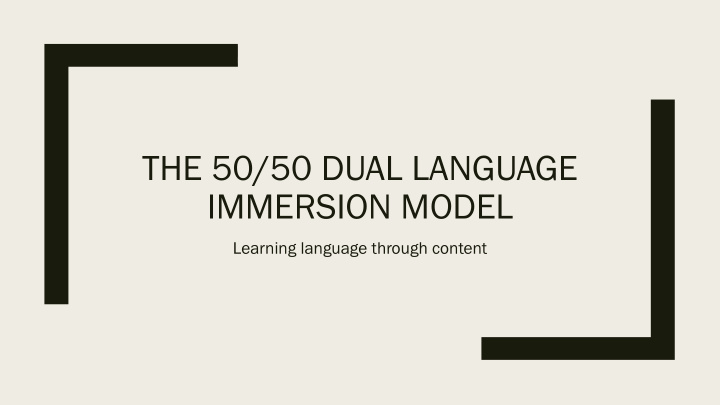



THE 50/50 DUAL LANGUAGE IMMERSION MODEL Learning language through content
One-way vs. two-way dual immersion ■ Most classrooms in Utah are a one-way model of dual immersion because the majority of the students do not use the target language. ■ There are a few two-way Spanish DLI schools where students whose first language is Spanish are placed in classrooms with students whose first language is English. Thus, the language learning goes two ways, English to Spanish and Spanish to English. ■ CLIL classrooms in Italy would be considered one-way immersion because the majority of students do not have English as their mother tongue.
What are the teachers doing? What are the students doing? ■ Read aloud literacy lesson: – https://www.youtube.com/watch?v=bjbF-hvp7ig ■ Setting high expectations for using the target language during science lesson: – https://www.youtube.com/watch?v=Z2lYxZErB2g – https://www.youtube.com/watch?v=EV_-2-oprzs
Bloom’s Taxonomy
Do! ■ Use the target language 90-100% of the time. ■ Use extra-linguistic cues: pictures, gestures, props. – Demonstrate word meanings with hands and body, with students mirroring behavior. – Total physical response (TPR) is an effective strategy. ■ Teacher talk – clarification requests, – comprehension checks, – repetitions, and rephrasing of their own and the learners’ utterances, for example, repeating a student’s one word answer in a full sentence. ■ Use comprehensible input, for example simpler sentence structures with repetition of key vocabulary. Speak clearly and relatively slowly. ■ Group work or working in pairs also increases comprehensible input as students repeat the target language to each other.
Don’t! ■ Avoid code-switching, especially translation. – Code-switching to clarify procedures or check for understanding can be useful. ■ Avoid doing all the talking! – Compel the children to use English. – Have students work in pairs (2 students) and small groups (3-4 students). ■ Avoid expecting an answer too soon. – Provide longer wait time for student answers. Students can talk to a partner first before answering in front of class (think, pair, share). Takahashi-Breines, H. (2002). The role of teacher-talk in a dual language immersion third grade classroom. Bilingual Research Journal , 26 (2), 461-483. https://doi.org /10.1080/15235882.2002.10668721
Closing thoughts?
Recommend
More recommend